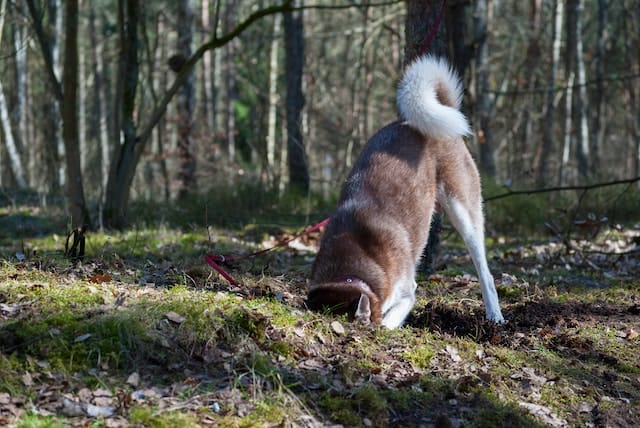
Dog training is no small feat. It requires a delicate balance of patience, consistency, and understanding of canine behavior. This document is aimed at providing insights into common dog behavior issues and strategies for addressing them effectively. Whether you are a seasoned dog owner or have just welcomed a new four-legged friend into your home, overcoming these hurdles can be a rewarding journey, strengthening the bond between you and your pet while ensuring their well-being and good behavior.
This guide will be your companion on this journey, offering expert advice and practical solutions for common behavioral challenges.
Addressing Aggression in Dogs
Aggression in dogs can manifest in various forms such as growling, snarling, snapping, and biting, which are all part of the dog’s defensive mechanisms. While it can be alarming, understanding the root cause of the aggression is key to addressing it. Often, aggression comes from fear, territoriality, or resource guarding. As the caregiver, your role is to identify the triggers for the aggression and help your dog feel more secure.
This could be achieved through a combination of positive reinforcement training, socialization, and potentially, professional help. Remember, patience and consistency are key in this process. Consistently rewarding good behavior and addressing triggers positively can go a long way in curbing aggression.
Seeking Expert Help for Dog Training
While dog training can be done at home, sometimes seeking professional help is necessary. If you have tried various techniques and are still struggling with behavior issues, consulting with a certified dog trainer or animal behaviorist can provide valuable insight into your pet’s behavior. Namely, the team from southenddogtraining.co.uk suggests that dog training needs to be altered to fit the individual dog, not the other way around. A professional trainer can create a customized training plan that addresses your dog’s specific needs and work with you to implement it effectively. They can also provide guidance on how to address any behavior issues that may arise during the process.
Dealing with Separation Anxiety
Dogs are social creatures and may experience anxiety when left alone for extended periods. This manifests in behaviors such as excessive barking, destructive chewing, and soiling in the house. To address this issue, it is important to understand that your dog’s anxiety stems from their attachment to you and fear of being left alone. Gradually increasing the time spent apart and providing them with stimulating activities, such as puzzle toys, can help ease their anxiety. Additionally, creating a safe and comfortable space for your dog while you are away can provide them with a sense of security.
Managing Excessive Barking

Barking is a natural form of communication for dogs, but excessive barking can be disruptive and may indicate underlying issues such as boredom, fear, or territoriality. To manage excessive barking, it is important to address the root cause and provide alternative outlets for your dog’s energy. This could include regular exercise, mental stimulation through training and games, and addressing any triggers that may be causing fear or territorial behavior.
A lot of times, excessive barking can also be a learned behavior. If your dog is rewarded for barking, such as attention or treats, they may continue to do so. In this case, it is important to consistently ignore the barking and only reward quiet behavior.
Potty Training
Accidents in the house are a common frustration for dog owners, but it is important to remember that potty training takes time and patience. Consistency is key in this process, and establishing a routine for bathroom breaks can help your dog understand where they should do their business. Positive reinforcement techniques, such as rewarding successful trips outside, can also encourage desired behavior. If accidents do occur, it is important not to punish your dog but rather focus on preventing future incidents by supervising and taking them out more frequently.
A good idea for potty training is to keep a designated area for your dog’s bathroom needs, such as a section of the yard or a specific spot on walks. This will help them understand where they should go and prevent confusion. Once your dog has consistently used the designated spot, slowly expand their bathroom area to include other parts of the yard or routes on walks.
Control Leash Pulling
Leash pulling is a common issue faced by many dog owners. It can make walks stressful and potentially dangerous for both you and your dog. Training your dog to walk nicely on a leash requires patience and consistency. The key is to teach your dog that pulling gets them nowhere. If your dog pulls, stop walking. Only resume the walk when the leash is slack. Over time, your dog will understand that pulling halts their progress. It’s important to reward your dog’s good behavior.
So, whenever your dog is walking with a slack leash, praise them and consider rewarding them with treats. Training tools like a front-clip harness can also be helpful in managing leash pulling. Remember, it’s always best to start training in a low-distraction environment and gradually introduce more distractions as your dog becomes proficient at walking on a slack leash.
Preventing Jumping on People
Dogs often jump up on people as a way of greeting or seeking attention. While it may seem like innocent behavior, not everyone appreciates a dog jumping on them. It can be particularly problematic if your dog is large or if they jump on children or elderly people. The key to stopping this behavior is to teach your dog a more polite way to greet people. One method is to teach your dog to sit when people approach. If your dog sits, they get attention. If they jump, the person walks away.
Over time, your dog will learn that sitting, not jumping, leads to positive attention. It’s important to note that everyone who interacts with your dog needs to reinforce this training for it to be effective. Consistency from all family members and visitors will help your dog learn faster and more effectively.
Navigating the landscape of dog behavior and training can be challenging, but with patience, consistency, and a deep understanding of your furry friend’s motives, it is a journey that can strengthen the bond between you and your pet. Remember that every dog is unique, and what works for one may not work for another. It is about finding what works for your individual dog and being consistent with it. Professional help is always available if you need it, and can provide invaluable insights into your dog’s needs and behaviors.
As a dog owner, your ultimate goal is to ensure your pet’s well-being and happiness. By addressing common behavioral issues effectively, you are setting your dog up for a lifetime of good behavior and ensuring a harmonious co-existence.
- What Are the Perfect Dog Breeds for Young Families? - July 17, 2024
- Important Things to Know Before Getting Your First Pet - June 4, 2024
- 6 Reasons to Choose a French Bulldog as Your Pet - March 21, 2024


GIPHY App Key not set. Please check settings